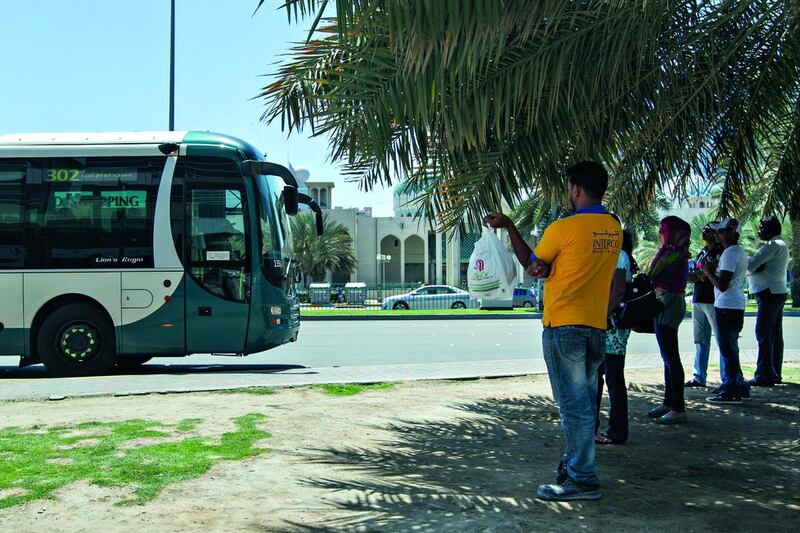ABU DHABI // Commuters are facing a sweltering summer because many air-conditioned bus shelters are out of order.
Some are locked, others have chairs broken, and several did not have any power and had rubbish dumped inside when The National checked on more than 10 of them last week.
In 2012, the Department of Transport announced it would open 360 air-conditioned shelters in the emirate by the start of 2014 at a cost of Dh100 million.
But these plans have apparently stalled and residents are concerned about the state of some units and the lack of shelters at other locations.
“If these shelters are open, we can cool off but they are locked. We have already entered into the UAE’s summer season but the real challenges of summer have yet to be faced from May onwards. What will happen then?” asked Himanshu Bhatnagar.
Mr Bhatnagar, 28, from India, was forced to wait outside an air-conditioned bus shelter on Muroor Road, which was locked because of an electricity fault.
Another problem is a lack of shelters at popular bus stops across the city, residents say.
Opposite the Madinat Zayed shopping centre in the searing midday sun, dozens of men, women and children were forced to stand in the shade of palm trees until a bus arrived.
“This is a crowded place and we should have a shelter. But we have to take shelter under trees,” said Daniel Muldong, 38, from the Philippines.
“Now we can stand but in June and July we can’t when temperatures reach 50°C.”
At the time the department announced its plans in 2012, it is believed there were 77 bus shelters with working air conditioners in Abu Dhabi, out of 81 that were built.
The department has never confirmed exactly how many of the air-conditioned shelters were built.
Shauna, from the Philippines, was sitting in the bus shelter in front of the Madinat Zayed centre. She felt that doors should be automated and they needed to be maintained regularly.
“The AC is switched on but the door is open as the slider derailed.”
Indian Abdul Wahab, 32, a worker who was waiting for a bus to Shahama at the same stop, said all he wanted was some respite from the soaring temperatures.
“A shelter is sufficient. We don’t want a hi-tech one. We are workers so if we get some shade to hide from direct sunlight, that will be enough.”
Rasu B, 36, was also sitting at the Madinat Zayed centre shelter. He showed how it was in such poor repair with most of the chairs broken.
“Such things happen everywhere. But the problem is of maintenance,” said Mr Rasu, from Sri Lanka.
These concerns were shared by Zafar Wajid, from Pakistan, who was waiting at a shelter on Falah Street in the capital.
The air-con was working but Mr Wajid said people who use the shelters were also to blame.
“I believe people are at fault. They should keep doors shut after they enter but they don’t do that. They should feel their responsibility too,” said Mr Wajid, 45.
“I know they get jammed or the doors derail but one should operate them properly,” Mr Wajid said.
The Department of Transport declined to comment.
anwar@thenational.ae






